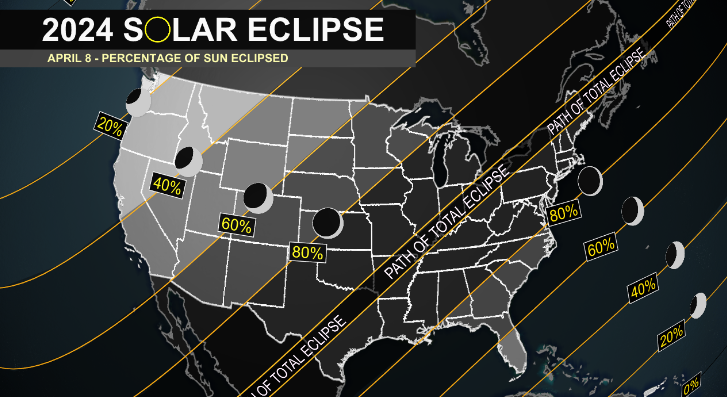JACKSONVILLE, Fla. — Become a part of the First Alert Neighborhood weather station network powered by Tempest:
:quality(70)/cloudfront-us-east-1.images.arcpublishing.com/cmg/Y77Y5DTEBJDKDM7252Y7QRYVQQ.png)
Oak pollen is at its peak right now! The numbers from Dr. Brian Seymour at Edward Waters University are above 3,000 grains per cubic meter! The good news is we should slowly see lower numbers over the next couple weeks with the majority of the worst of the pollen over by the end of March.
THE PLAYERS through March 17th looks warm - more like May (like the “old days”) instead of March. And warmer temps. allow the ball to travel longer distances.
Astronomical spring (spring equinox) arrives Tue., March 19th. That’s when the sun’s rays are about perpendicular with the equator & day vs. night is just about equal for the Northern Hemisphere. And, of course, it means warmer temps. The avg. high in Jax goes from the mid 70s now to approaching 80 by “tax day” to the mid 80s by mid May.
It’s under a month to the Great (North) American Eclipse! April 8th is the big day with only a partial eclipse (between 60 & 65% of the sun covered) visible over Jacksonville/NE Florida/SE Georgia. Totality will arc from Texas to Northern New England. All the info at Action News Jax * here *.
We’ve just added a glossary of sorts (thanks American Astronomical Society!):
FIRST ALERT ECLIPSE LINGO:
Baily’s Beads: Caused by shafts of sunlight shining through deep valleys on the lunar limb (edge), they look like a series of brilliant beads popping on and off. They appear just prior to second contact and just after third contact at annular and total solar eclipses. They’re named after the English astronomer Francis Baily, who first described them during the annular eclipse of May 15, 1836.
Chromosphere: A thin, red-colored layer of solar atmosphere located just above the photosphere. It is briefly visible immediately after second contact and just prior to third contact at a total solar eclipse.
Corona: The Sun’s upper atmosphere, visible as a pearly glow around the eclipsed Sun during totality. Its shape (sometimes elongated, sometimes round) is determined by the Sun’s magnetic field and is linked to the sunspot cycle.
Diamond Ring: A single Baily’s Bead, shining like a brilliant diamond set into a pale ring created by the pearly white corona. It’s the signal that totality is about to start (second contact) or has ended (third contact).
Duration: The time between second and third contact during a total or annular solar eclipse.
Eclipse Magnitude: The fraction of the Sun’s diameter covered by the Moon. It is a ratio of Sun/Moon diameters and should not be confused with eclipse obscuration (see next item). When the eclipse magnitude is 50% (that is, when 50% of the Sun’s diameter is covered), only about 40% of the solar surface area is obscured.
Eclipse Obscuration: The fraction of the Sun’s surface area covered by the Moon. Do not confuse it with eclipse magnitude (see previous item). When 50% of the solar surface area is obscured, the eclipse magnitude is roughly 60%.
First Contact (C1): The moment when the Moon takes its first tiny nibble out of the solar disk — the beginning of the partial phase of an eclipse.
Fourth (last) Contact (C4): The instant when the Moon no longer covers any part of the solar disk. This signals the conclusion of the partial phase of an eclipse.
New Moon: The lunar phase when the Moon is located in the same direction in the sky as the Sun. New Moon is the only lunar phase during which an eclipse of the Sun can occur.
Partial Eclipse: A solar eclipse where the Moon covers only a portion of the Sun. A partial eclipse precedes and follows totality or annularity, but a partial can also occur by itself. A partial solar eclipse is visible over a wider swath of Earth than is totality or annularity.
Penumbra: The portion of the Moon’s shadow in which only part of the Sun is covered. An observer standing in the penumbra sees a partial solar eclipse.
Photosphere: The visible surface of the Sun, which consists of a gas layer at a temperature of roughly 5,500° Celsius (10,000° Fahrenheit).
Prominence: Hot gas hanging just above the solar surface, usually appearing as a red-colored arc or filament hovering in the lower part of the corona. Prominences are quickly covered by the Moon after second contact and revealed just prior to third contact at a total solar eclipse.
Second Contact (C2): The instant when the total or annular phase of an eclipse begins. For a total eclipse, this is synonymous with the disappearance of the first diamond ring. At second contact during a total solar eclipse, darkness suddenly falls (but only to the level of deep twilight).
Third Contact (C3): The instant when the total or annular phase of a solar eclipse ends. For a total eclipse, this is synonymous with the appearance of the second diamond ring. At third contact during a total solar eclipse, daylight suddenly returns.
Total Eclipse: A solar eclipse where the apparent diameter of the Moon is large enough to completely cover the Sun’s photosphere (even if only momentarily) and reveal the faint solar corona.
Totality: The maximum phase of a total solar eclipse, during which the Moon’s disk completely covers the Sun’s bright face. Totality occurs between second and third contact. It can last from a fraction of a second to a maximum of 7 minutes 31 seconds.
Umbra: The darkest part of the Moon’s shadow, within which the entirety of the Sun’s bright face is blocked. Within the umbra, the Moon appears larger than the Sun. An observer standing in the umbra sees a total solar eclipse.
Umbraphile: A solar-eclipse aficionado; a person who will do almost anything, and travel almost anywhere, to see totality. Another term for an umbraphile is “eclipse chaser.”
:quality(70)/cloudfront-us-east-1.images.arcpublishing.com/cmg/XJPGAOQQJ5GUJKYPU3D557NFZY.jpg)
:quality(70)/cloudfront-us-east-1.images.arcpublishing.com/cmg/CK6ZXYKB2ZF65PIGZAVXSP32SQ.png)
:quality(70)/cloudfront-us-east-1.images.arcpublishing.com/cmg/4BY52YP3URHB3CBG6342FEUNGQ.jpg)





:quality(70)/cloudfront-us-east-1.images.arcpublishing.com/cmg/YFVQFPSEYFGUJNN5FIL45PWXNM.jpg)
:quality(70)/d1hfln2sfez66z.cloudfront.net/07-26-2024/t_c813fb310b044b9a937ea03a38306cf5_name_file_960x540_1200_v3_1_.jpg)
:quality(70)/cloudfront-us-east-1.images.arcpublishing.com/cmg/OP4L4IUHEIWRTTX257DKOM4IMU.jpg)
:quality(70)/cloudfront-us-east-1.images.arcpublishing.com/cmg/M7DQOP5FJNTRMVP5QYWYEBACAI.jpg)
:quality(70)/cloudfront-us-east-1.images.arcpublishing.com/cmg/GUKNEPXKO4TU3TGUXRFOFQBQLY.jpg)